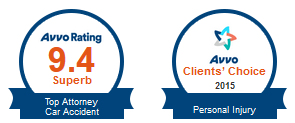One of the most common victims of slip and fall accidents are tenants who are injured at the place they call home. When a tenant is injured, the question is how much responsibility does the landlord have for the accident and for the damages and losses the tenant suffers because of the injuries they suffer in the fall.
What types of slip and fall accidents do tenants sustain?
A slip and fall accident can happen in a multitude of ways, but there are certain types of tenant injuries that slip and fall accident attorneys see frequently. These include:
- Flooring
- Parking lots and sidewalks
- Poor lighting
- Snow and ice removal
- Stairways
What types of injuries do tenants suffer from slip and fall accidents?
Many tenant victims of slip and fall accidents require treatment and recovery for the following types of injuries:
- Back injuries
- Brain injuries
- Fractured ankles and writs
- Knee injuries
- Pulled muscles
- Shattered collarbones
- Skull fractures
- Spinal cord injuries
- Sprains
- Stretched ligaments and tendons
- Tailbone bruises and fractures
How is a landlord responsible for a slip and fall accident?
A landlord owes a duty of care to their tenants, which means they are responsible for properly maintaining the property the tenant is renting, as well as promptly repairing any issues that that come up. This not only applies to the inside of the property in the areas the tenant lives in, but also applies to common areas of the property, such as stairways, hallways, lobbies, and elevators. This responsibility also covers the outside of the property, including parking lots, driveways, sidewalks, pool areas, and yards.
If a tenant is injured in a slip and fall accident and retains an attorney to pursue damages for those injuries, the attorney will look at the following to determine if the landlord was negligent in the accident:
- Did the landlord or one of their representatives/employees create the hazardous condition?
- Did the landlord know the hazardous condition or should have known the hazardous condition existed?
- Did the landlord ignore the hazardous condition for an extended period of time?
When isn’t the landlord responsible for the injury?
If the tenant has a lease with the landlord and the lease states that there are areas that the tenant is responsible for, then there is a possibility the landlord would not be responsible for the slip and fall accident. For example, let’s say the lease specifically states that the tenant is responsible for all snow and ice and removal on stairs, walkways, and the driveway. The tenant fails to remove the ice that has built up on the outside stairs. He falls and breaks his hip, leaving him unable to work at his construction job while the hip heals.
Because the lease states that the tenant was responsible for ice removal, he likely would not have a claim against the landlord and would be responsible for his own medical bills and could not pursue loss on income damages.
If that same tenant and landlord had a lease that stated the landlord was responsible for all snow and ice removal and the tenant fell and fractured his hip, he would likely have a strong personal injury case against the landlord. If you have any personal questions, do not hesitate to contact an experienced slip and fall lawyer Minneapolis MN trusts to ensure you get proper guidance.
Thank you to Johnston Martineau PLLP providing their insight on slip and fall accidents.






